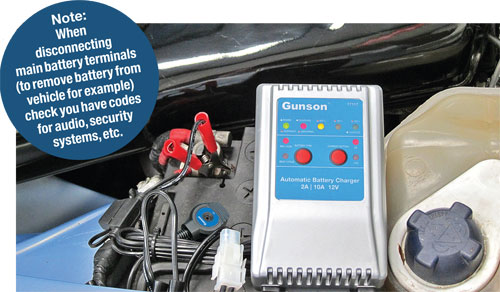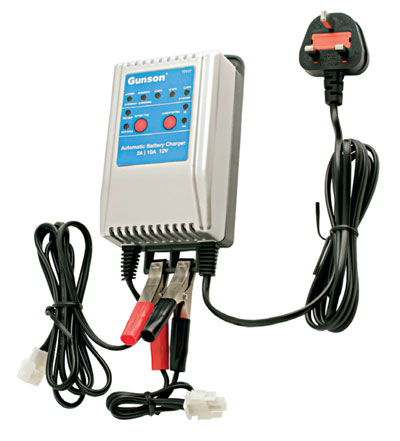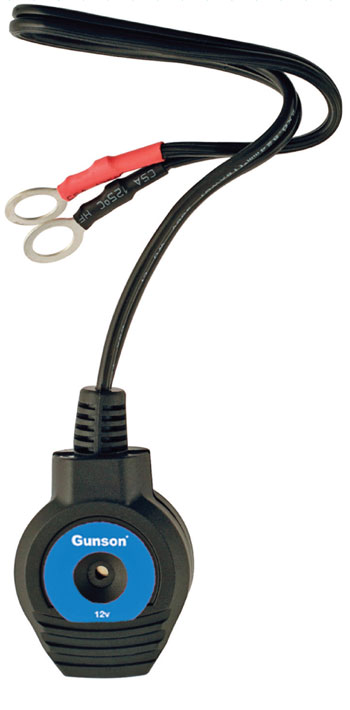Tech-TorqueYour technical guide to using Gunson tools
Contents



Gabby Gunson says:
If your vehicle is not used regularly or stored over the winter months, maintain the battery with two useful Gunson products: the 77117 Battery Charger and the 77119 Smart Battery Alert.
If the battery voltage drops below 12.2V the 77119 triggers an audible warning.
The 77117 is a fully automatic, microprocessor controlled unit, maximum charge rate of 10 amps. Once the battery is charged it is maintained at full voltage without overcharging.
If the car or motorcycle is off the road for extended periods the 77119 Smart Battery Alert simply fits on to the battery terminals and constantly monitors the battery voltage. The unit is small and easily positioned on the top or the side of the vehicle’s battery. Cable ties are provided to secure. It doesn’t

Time now to bring out the 77117 automatic battery charger. It is a fully featured unit that will charge discharged batteries as well as maintain the battery in a fully charged state without overcharging.
It charges in four stages: the initial precharge stage brings the discharged battery up to a preset voltage level to enable the second pulse-charging stage which assists with battery desulphurisation; the third (absorption) stage brings the battery up to 100% capacity. The final stage is a ‘maintenance’ pulse charge(float mode) which will maintain the battery in a fully charged state without overcharging. The charger will automatically select the appropriate stage of charging depending on the battery’s level of charge.
The 77117 is suitable for regular(sealed or unsealed) lead acid batteries, AGM (absorbed glass mat) and GEL (gelified electrolyte)batteries used on motorcycles, cars and light commercial vehicles. Also suitable for charging the deep cycle batteries found on golf buggies and farm, construction and industrial machinery. It features short-circuit, overload current, over voltage and over temperature protection, and is suitable for 12V batteries with capacities between 2AH to 200AH.
Easy to set up and use: once connections to the battery have been made
Now select level of charging (2A or10A). The LED will light to indicate

charge level setting. As the battery is charging, the level of charge is indicated by the flashing amber LEDs(60% and 80%). At 90% the green LED will flash; as the battery reaches its fully charged state the charging current will drop. When battery is fully charged, the green LED will remain lit. The charger has entered float mode and will maintain the battery at between 13.2V – 13.6V.
With these two Gunson products you can relax in the knowledge that your battery is not going to let you down after weeks or even months of non-use. This is also of benefit to the battery as it will quickly deteriorate when in a discharged state.

Always remember the golden rules when connecting up car or motorcycle batteries:
The charger should be connected to the battery before connecting to the mains supply. When finished, switch off at the mains supply before disconnecting the charger from the battery.
Identify the polarity of the battery terminals (if not clearly indicated, the positive terminal or post is normally larger than the negative).
Connect the positive(red) clip to the positive battery terminal first. Then connect the negative (black) clip to the negative battery terminal.
You must wear approved safety eye protection when connecting or disconnecting battery / battery charger leads.
Never allow the charger clamps to touch each other or to contact a piece of metal that could bridge them.